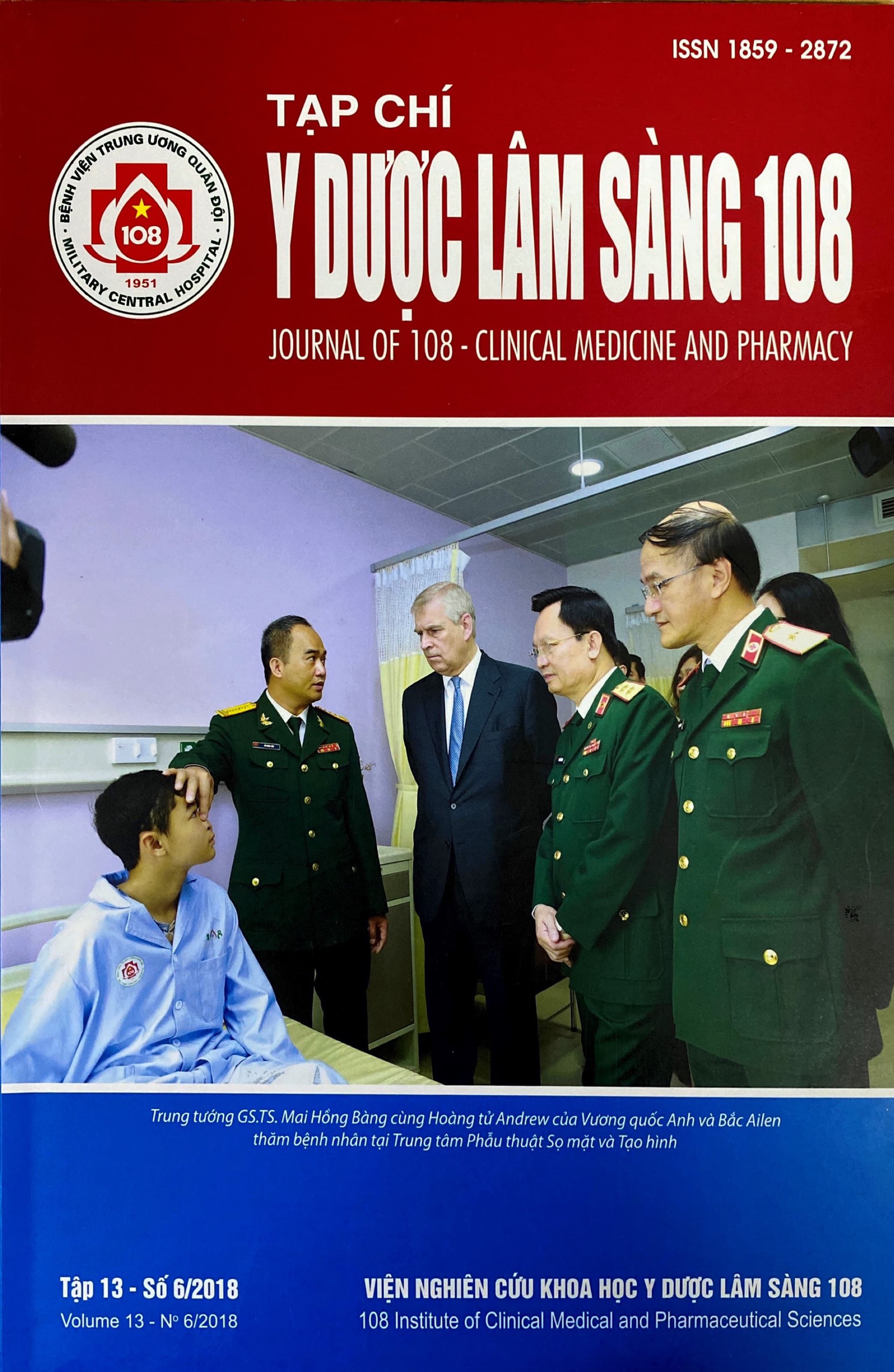Density and morphology of posterior mandibular bone on cone beam CT
Main Article Content
Keywords
Bone density, bone morphology
Abstract
Objective: Comment on the density and morphology of posterior mandibular bone on Cone beam CT. Subject and method: Cone beam CT of 89 patients. Method: Cross-sectional descriptive study. Result: No bone density D1, D2. At the first and second mandibular molar teeth area, bone density D3 predominated (with 43.9% and 47.5% respectively). In the area of mandibular second molar tooth, the incidence of U-shaped morphological findings was greater than that of the first molar tooth with rates of 34.9% and 24.5%, respectively. The average depth of the inner edge was 2.1 ± 0.75mm, the average angle of the inner edge was 61.78o ± 11.34o. Conclusion: D3 bone density and U-shaped morphology are predominant.
Article Details
References
1. Nguyễn Mạnh Minh (2008) Thực trạng mất răng của người lớn ở Hà Nội và nhu cầu điều trị phục hình. Tạp chí Y học thực hành, số 2, tr. 67-69.
2. Vũ Việt Hà (2013) Nhận xét tình trạng xương hàm tại vùng mất răng và các răng kế cận ở bệnh nhân mất răng đơn lẻ được chụp phim CT cone beam. Luận văn tốt nghiệp bác sĩ y khoa, Trường Đại học Y Hà Nội, tr. 30-35.
3. Prashant PJ, Jaju VS, Arun VS et al (2011) Pre-evaluation of implant sites by Dentascans. Journal of Dental Implants 1(2): 63-74.
4. Phạm Thanh Hà (2012) Điều trị mất răng hàm lớn bằng phục hình implant. Luận án Tiến sĩ Y học, Trường Đại học Y Hà Nội, tr. 85-87.
5. Chan HL, Brooks SL, Fu JH, Yeh CY, Rudek I, Wang HL (2011) Cross sectional analysis of the mandibular lingual concavity using conebeam computed tomography. Clinical Oral Implants Research 22: 201-206.
6. Lin MH, Mau LP, Cochran DL et al (2015) Risk assessment of inferior alveolar nerve injury for immediate implant placement in the posterior mandible: A virtual implant placement study. J Periodontol 82(1): 129-135.
7. Hans-Joachim N, Manfred W, Stephan E (2015) Lingual concavities in the mandible: A morphological study using cross-sectional analysis determined by CBCT. J Craniomaxillofac Surg 43(2): 254-259.
2. Vũ Việt Hà (2013) Nhận xét tình trạng xương hàm tại vùng mất răng và các răng kế cận ở bệnh nhân mất răng đơn lẻ được chụp phim CT cone beam. Luận văn tốt nghiệp bác sĩ y khoa, Trường Đại học Y Hà Nội, tr. 30-35.
3. Prashant PJ, Jaju VS, Arun VS et al (2011) Pre-evaluation of implant sites by Dentascans. Journal of Dental Implants 1(2): 63-74.
4. Phạm Thanh Hà (2012) Điều trị mất răng hàm lớn bằng phục hình implant. Luận án Tiến sĩ Y học, Trường Đại học Y Hà Nội, tr. 85-87.
5. Chan HL, Brooks SL, Fu JH, Yeh CY, Rudek I, Wang HL (2011) Cross sectional analysis of the mandibular lingual concavity using conebeam computed tomography. Clinical Oral Implants Research 22: 201-206.
6. Lin MH, Mau LP, Cochran DL et al (2015) Risk assessment of inferior alveolar nerve injury for immediate implant placement in the posterior mandible: A virtual implant placement study. J Periodontol 82(1): 129-135.
7. Hans-Joachim N, Manfred W, Stephan E (2015) Lingual concavities in the mandible: A morphological study using cross-sectional analysis determined by CBCT. J Craniomaxillofac Surg 43(2): 254-259.
 ISSN: 1859 - 2872
ISSN: 1859 - 2872
